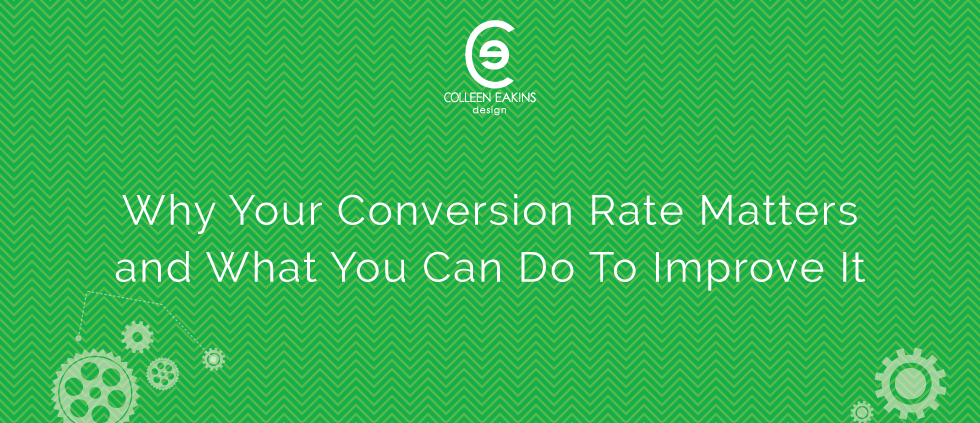Why Your Conversion Rate Matters and What You Can Do To Improve It
When conducting business online, the more you understand about your website metrics and conversion rates, the more equipped you are to make improvements and adjustments to optimize your results.
One of the most relevant metrics to most website owners is their “Conversion Rate.” If you aren’t familiar with what this term means, simply put, it is the total number of visitors at your site who complete a desired action while on your pages
Classic examples of a successful “Conversion” include getting someone to sign up for your newsletter, buying products or services from your website, finishing a lead capture or generation form, or even sending a message via your Contact Page
Conversion rates are calculated by taking the total number of conversions and dividing it by the number of total clicks or website visits that logged a conversion during any given time frame.
The ultimate goal of every website owner and business person is to have as high of a conversion rate as possible – regardless of whether you are building a mailing list or selling items online
Conversion Rate Optimization Explained
Now that we’ve discussed what a Conversion Rate is, we’re going to discuss “Conversion Rate Optimization.”
While every Conversion is a ‘win’ for you, some Conversions are more valuable than others. For instance, getting someone to sign up for occasional newsletter updates may not have the immediate monetary return that a direct sale has. However, since your visitor opted into further marketing messages, you get the opportunity to connect with them via Email or SMS for future promos, special offers, or new product and service launches.
It goes without saying that setting up Conversion rate optimization strategies on your most lucrative pages is the most straightforward way to increase your conversion figures. Keep in mind how much differently your results will be, based on your offer. If you have a ‘free’ offer, the chances are good that you’ll have a higher Conversion rate than if you have a ‘paid’ offer that requires the visitor to buy something from you. Giving up an Email address is a lot less of a commitment than making a purchase.
The trick is to make sure that you’re tracking all of the different actions that are taking place on your pages.
Many web developers choose Google Analytics and Webmaster Tools to establish Conversion Goals for their personal and client projects.
Setting up Conversion Tracking takes a bit of time and planning since each Goal must get setup separately. Once the Conversion Tracking is set up and properly installed on your website, any site visitor who completes the desired action for the conversion gets counted in your statistics. These statistics are helpful for conducting A/B Testing to establish which pages are most effective at creating a Conversion for you through Organic or Paid website traffic campaigns. By running a campaign for your A/B test, you’ll quickly find out which version of your web page is helping you meet your sales goals and objectives the fastest. In the interest of running very targeted marketing campaigns, choosing the best version of your conversion page returns the best Return On Investment for your campaign, which is always smart business! (If you are unsure of how to setup Conversion Tracking for yourself, the professionals at Colleen Eakins Design are happy to help!)
Double Check Your Website For Navigational Obstructions
No one likes to run into difficulties when they visit a website. In today’s day and age, site visitors can be fickle. Many seemingly small issues could be the difference in making a sale or losing the attention of your site visitors forever. Before proceeding with a Paid Advertising Campaign to increase your overall Conversion rate, it is always a smart idea to review your site with a ‘fine tooth comb’ to make sure that everything operates as expected.
Always make certain to double check that your CTA’s (Call to Action) are clearly visible to your site visitors. Think of your CTA’s like a Road Sign that direct your visitors to complete your desired action. If these ‘Road Signs’ aren’t present, you can’t be too surprised if people leave your site quickly and without taking any action whatsoever. (This is known as your “Bounce Rate.”)
If you are selling products or services, answering any questions and addressing concerns that would interest a potential customer is a shrewd business move. Not only does this help increase sales, but it also makes your company or Organization more efficient by removing the need for an employee or staff member to have to answer common questions as a part of the sales process.
Providing information regarding your Shipping Policies, Return Policies, Money Back Guarantees, or other Terms and Services helps protect both you and your customer. You want your client to feel comfortable in their decision to do business with you, so the more pertinent information you provide online, the better. You don’t want to take the chance that they’ll leave your site to search for a competitor who has taken the time and made the investment in providing a better User Experience. Responsive or Mobile-Friendly design facilitates a streamlined user experience regardless of whether the end user is surfing your site on a mobile device or a large flat-screen TV.
Credibility is critical, so all steps you take to establish trust and authority on your site are worth exploring. Don’t overlook how important TLS/SSL Security, Security Seals, Customer Reviews, and references from respected Organizations like your Local Chamber of Commerce or the Better Business Bureau are beneficial in building your credibility and consumer confidence.

I’m a Digital Marketer & Freelance Writer with a penchant for all things forward-thinking and positive. I’m a fan of abundance and progress.




